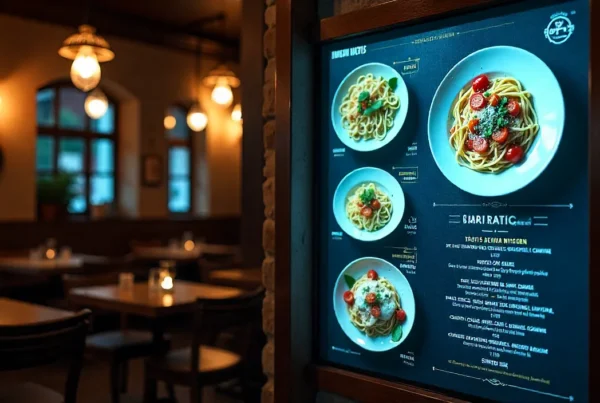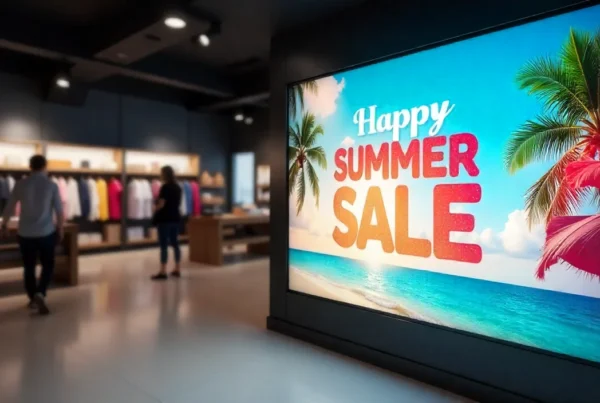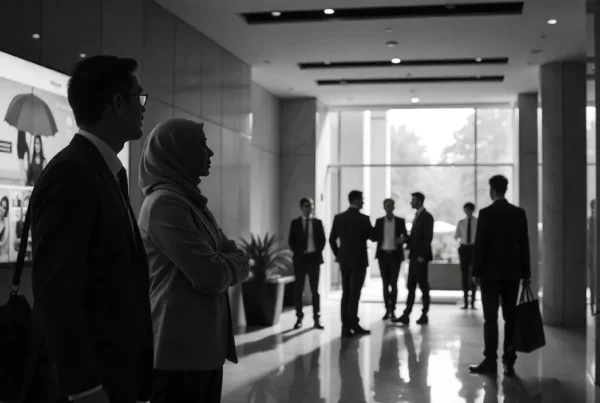The Digital Transformation of the QSR Industry
Long lines, static menus, and outdated posters—these are pain points every QSR owner knows too well. You spend money reprinting menus, struggle to upsell during peak hours, and miss opportunities to promote limited-time offers.
Now imagine if your screens could sell for you.
That’s the promise of quick service restaurant digital signage—the ultimate tool to modernize your operations, boost revenue, and create an unforgettable QSR digital experience.
With platforms like Nento, restaurants can now replace traditional print menus with dynamic visuals that inform, engage, and convert—all in real time.
Digital signage isn’t a luxury anymore—it’s a necessity. Let’s explore how it transforms your QSR.
Why Your QSR Needs Digital Signage
Boost Sales and Increase Average Order Value (AOV)
Your menu is your greatest salesperson.
Display flashy images and subtle animations to showcase high-margin products and advertise meal upgrades. Promote combinations with intelligent offers such as Make it a Combo! or market seasonal LTOs (Limited-Time Offers) to encourage buying on the spot.
Fact: “QSRs using digital menu boards report a 20–30% increase in AOV within the first 3 months.”
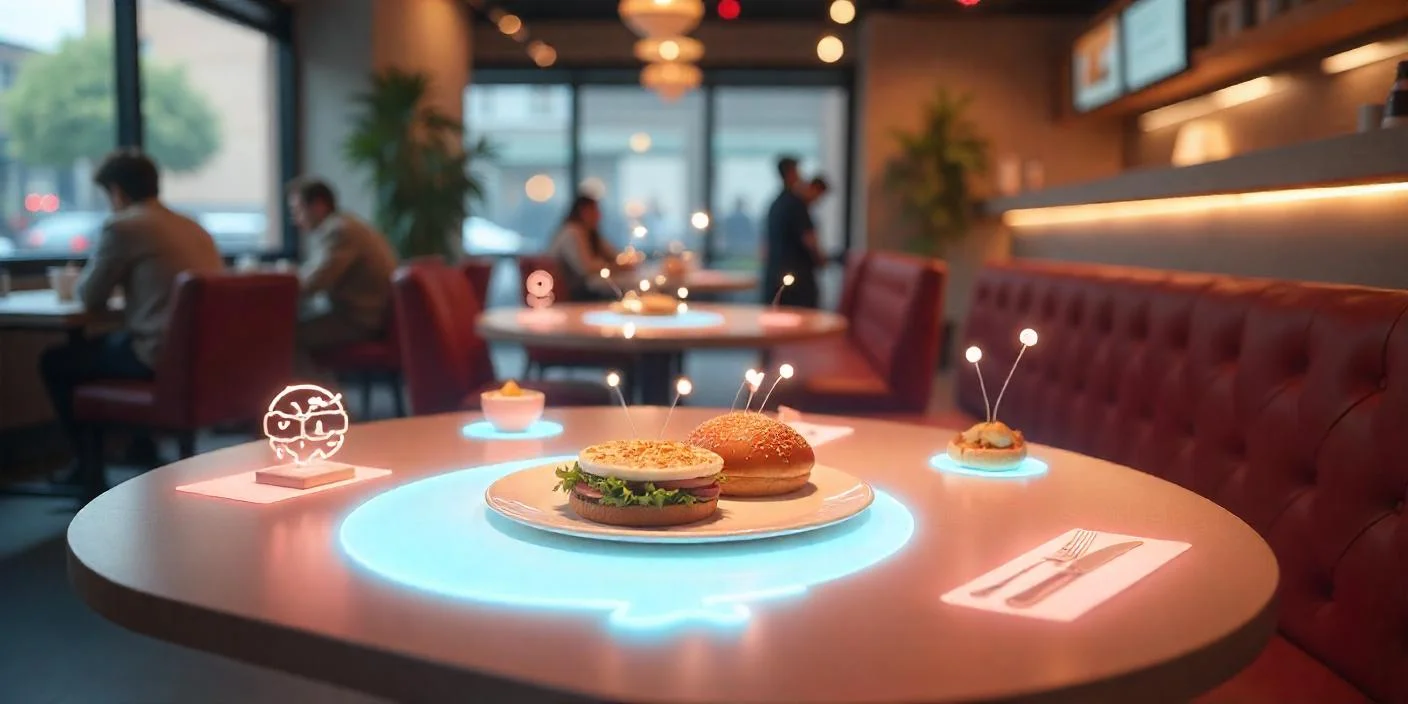
Enhance the Customer Experience and Reduce Wait Times
Good QSR digital experience design ensures that customers aren’t bored while they wait. Show order statuses in real time, social media posts, or brief brand videos to make queues appear shorter and experiences more pleasant.
Dynamic screens turn waiting into watching—and watching into wanting.
Achieve Unmatched Operational Agility
Have to delete a sold-out product or adjust the prices at 50 locations? Do it instantly.
Dayparting allows menus to be automatically changed to breakfast, lunch, and dinner with QSR digital signage software. No manual changes, just real-time control.
Strengthen Brand Consistency
The same polished appearance should be visible to every customer regardless of where they are located, be it in New York or Oslo.
Digital signage makes sure that all the visuals remain on-brand, crisp, dynamic, and professional, as opposed to posters that fade easily.
Ready to unlock these benefits for your brand? Schedule a free demo with Nento → to see our platform in action.
Key Applications of QSR Digital Signage
Dynamic Digital Menu Boards—The Heart of Your QSR
Digital menu boards Modern QSR makes your food come to life. Browse easily with high-definition images, motion graphics, and logical groupings of the menu.
Pro tip: “Feature one high-margin item per category—customers are 25% more likely to order it when displayed with animation.”
Drive-Thru Digital Signage for Higher Conversion
Your drive-thru screens are prime real estate.
Digital signage outside-rated displays can be used to display combos, display order confirmations, and minimize errors, all of which can be used to increase upsell opportunities per order.
Captivate Customers with Outdoor Digital Signage
Get notice before the customers enter.
Outdoor QSR digital signage advertises specials, happy hour, and loyalty deals to both pedestrians and traffic.
Internal Communications and Operational Displays
Digital signage isn’t just for guests; it also serves your teams.
Display live order queues, staff KPIs, or training prompts with the use of kitchen-area screens, which help coordinate back-of-house activities more easily.
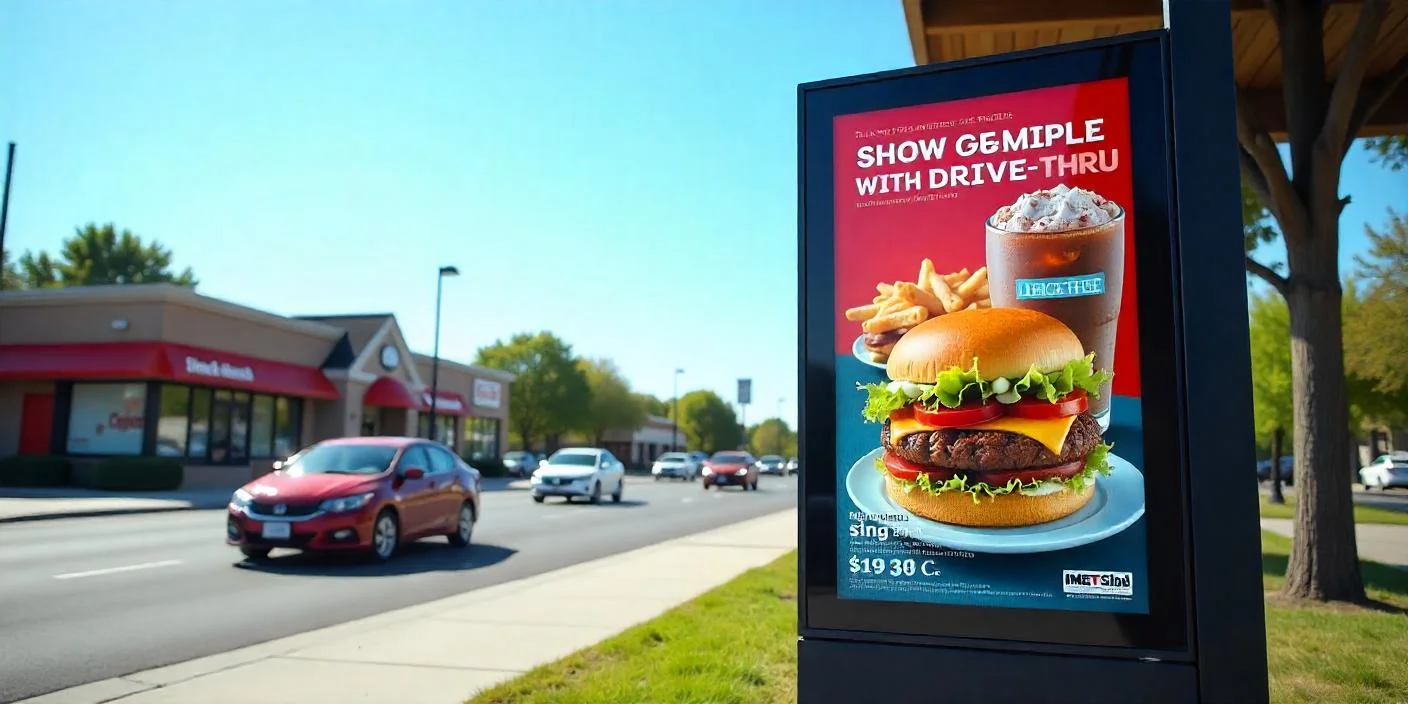
How to Set Up QSR Digital Signage—A Step-by-Step Guide
Step 1: Define Your Goals
Determine what success looks like. Would you like to increase sales, market new products, or reduce perceived wait times? Being clear is the motivator of your digital strategy.
Step 2: Choose the Right Hardware
Choose pick screens that can be used both indoors and outdoors, and use reliable media players and heavy mounts that are QSR-friendly.
Step 3: Select the Right Software
Your QSR digital signage software is the brains of the operation. Look for:
- Cloud-based control
- Scheduling and dayparting
- In-built menu and promotional templates.
- POS integration features.
Step 4: Design for the Customer
Adhere to the best practice of QSR digital experience design: bright images, high contrast, and readable fonts. Make text short and calls to action clear.
Step 5: Install, Launch & Manage
Professional installation is a sure bet. After that, control it all remotely using cloud dashboards to update and provide analytics.
Feeling overwhelmed? Nento provides an end-to-end solution, from hardware recommendations to easy-to-use design templates. Learn About Nento’s All-in-One Platform →
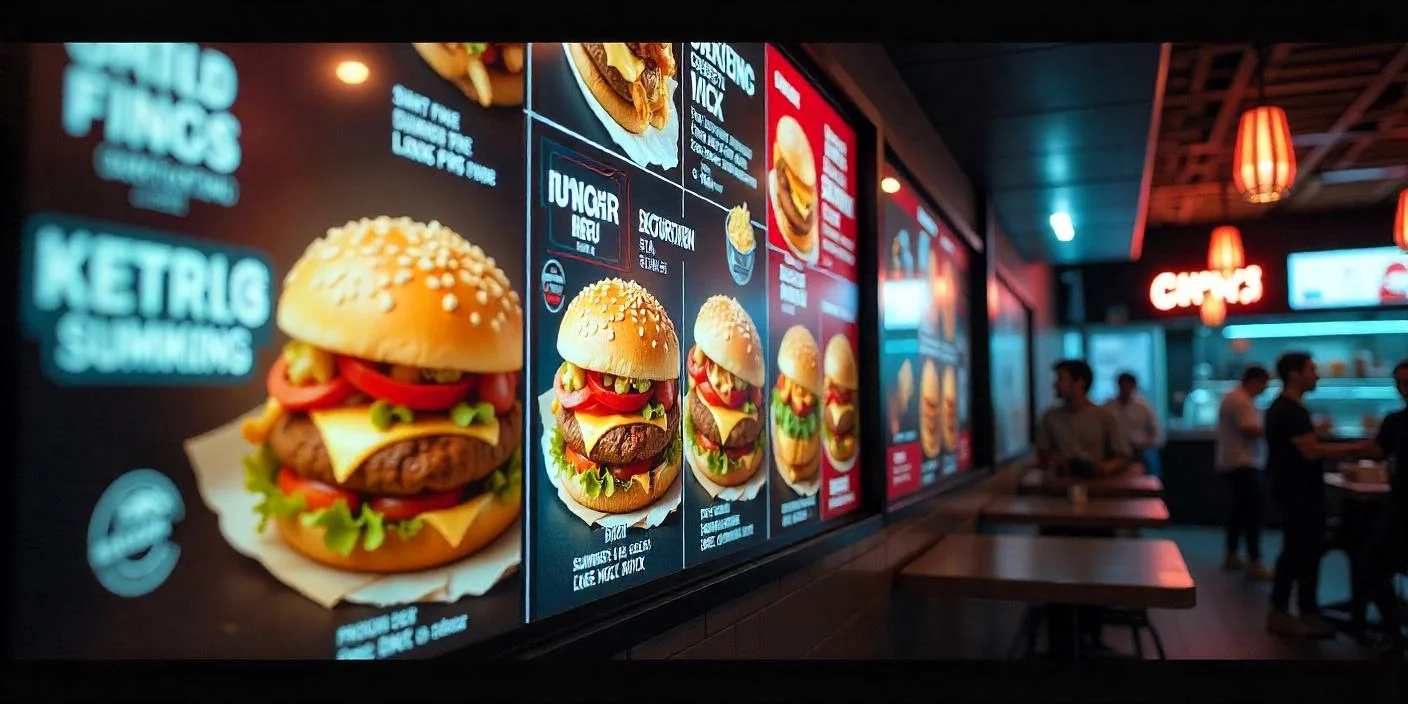
Choosing the Right QSR Digital Signage Software
Must-Have Features for Digital Signage QSR Systems
- Cloud-Based Management: menu updating around the world in seconds.
- Intuitive CMS: Drag-and-drop control for non-technical users.
- Scheduling & Dayparting: Auto-schedule menu changes based on the time of the day.
- Template Library: Fast rollout with built-in designs.
- Integration: Integrate with POS or kitchen display systems.
- 24/7 Support: Round-the-clock support and fast response when it matters most.
Fact: “Franchises using cloud-managed QSR signage reduce update time per campaign from hours to minutes.”
Why Nento is the Ideal Partner for Your QSR
Nento—Designed for the Fast-Paced World of QSRs
Nento isn’t an ordinary software company; it’s built for quick-service environments.
Blazing Fast & Reliable: Made to run in high-volume settings.
- Drag-and-Drop Simplicity: Design beautiful menus even without design skills.
- Scalable for Any Size: Works effectively for individual outlets or large chains.
- QSR Expertise: We understand the speed, stress, and accuracy your business demands.
Client quote: “With Nento, we update 40+ locations simultaneously—it’s like having a digital manager who never sleeps.”
👉 Don’t just take our word for it. Start Your Free Trial of Nento Today → and experience the difference a purpose-built platform can make.

Frequently Asked Questions (FAQs)
What is the cost of implementing QSR digital signage?
It will be based on the number of screens, features of the software, and the contents required. Nento has flexible pricing based on ROI and growth.
How hard is it to update content?
Nento has intuitive QSR digital signage software, which allows updates within minutes. Simple drag and drop and publish—no technical expertise required.
Can we use our existing screens?
In many cases, yes. When your TVs meet the requirements, then we can simply connect them through a Nento media player.
How does digital signage improve customer experience?
It increases interaction with real-time images, lowers the perceived wait times, and provides an enjoyable digital experience in a modern QSR.
Is it reliable for franchises?
Absolutely. The cloud platform offered by Nento is secure, scalable, and designed with centralized management and local control.
The Future of QSR Is Digital
The world’s fastest-growing restaurants aren’t defined by speed alone—they’re defined by experience.
Quick service Restaurant digital signage helps you sell smarter, work faster, and deliver the memorable moments customers crave. With Nento’s QSR digital signage software, you can manage everything—menus, promotions, and visuals—with one easy, powerful system.
Stat: “QSRs that embraced digital transformation saw a 29% jump in repeat customer visits.”
Stop letting static menus limit your growth. Embrace the power of dynamic digital signage and create a QSR digital experience that keeps customers coming back.


